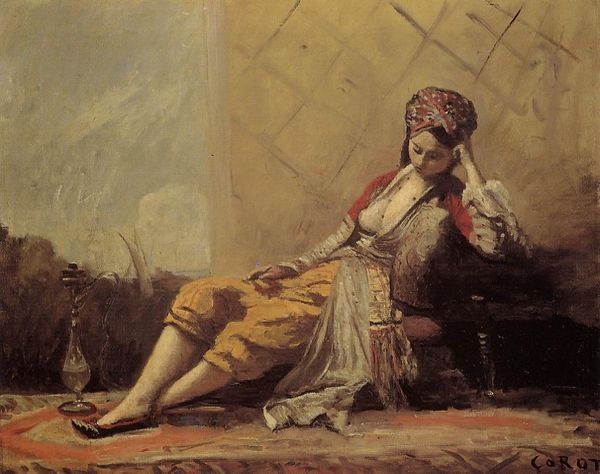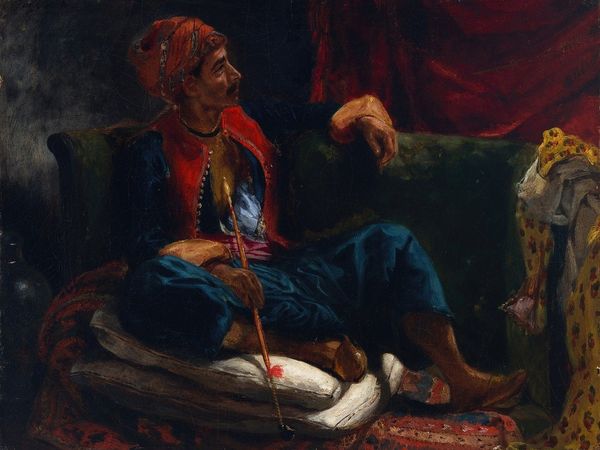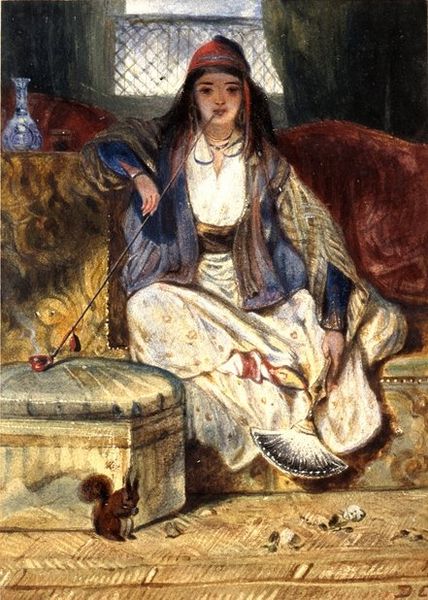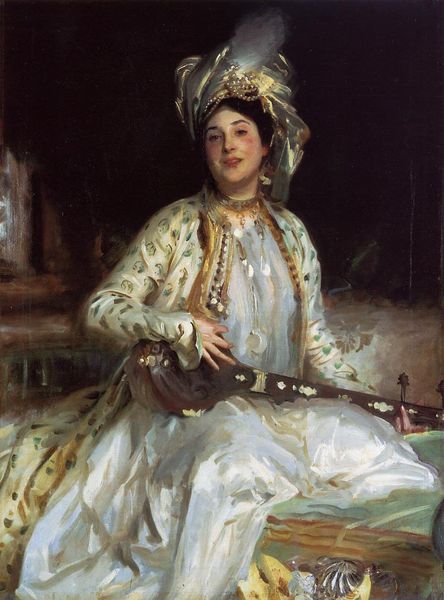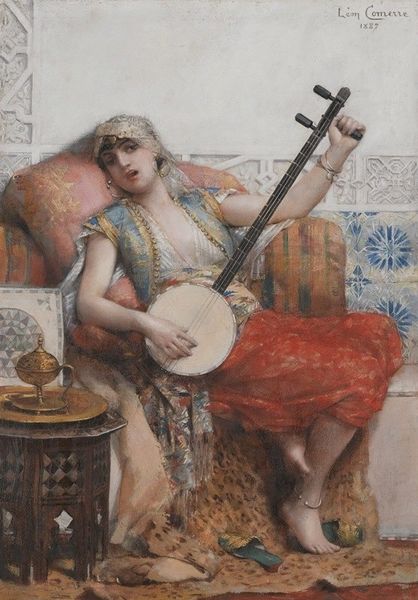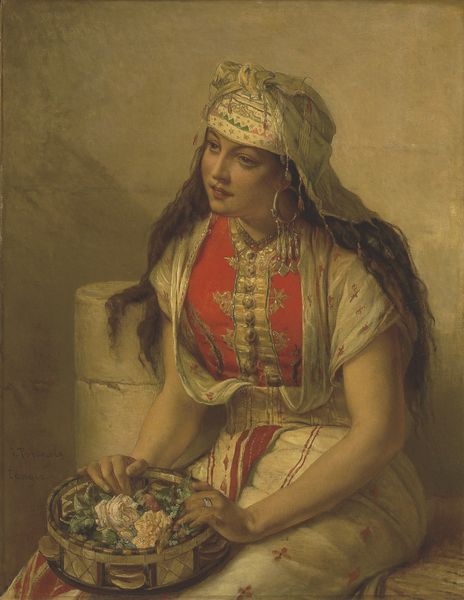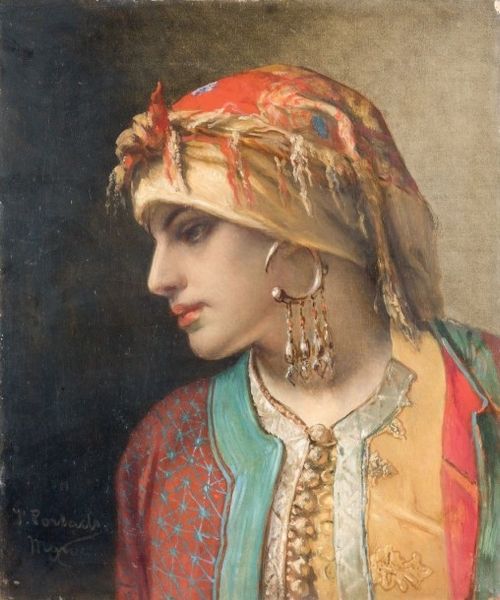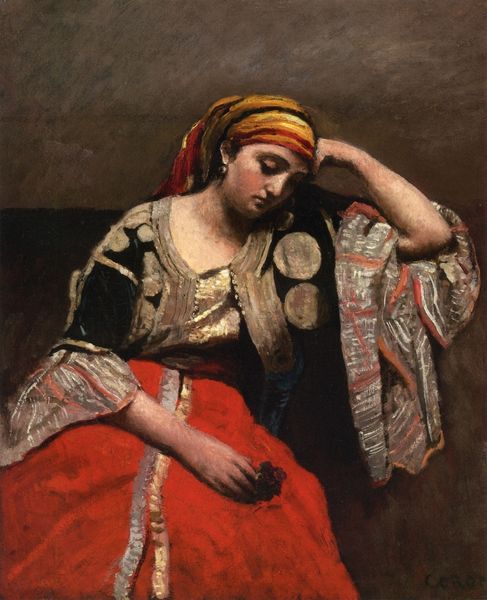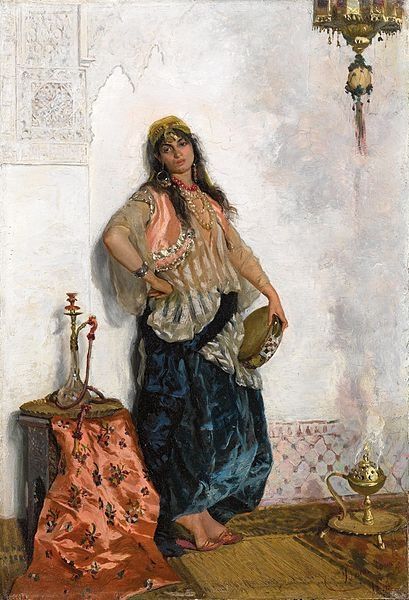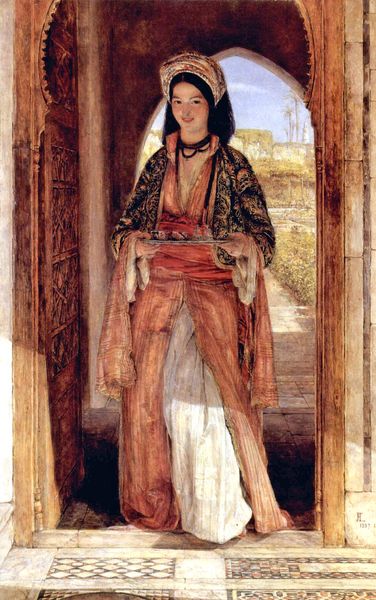
oil-paint
#
portrait
#
figurative
#
oil-paint
#
oil painting
#
orientalism
#
genre-painting
#
portrait art
#
realism
Copyright: Public Domain: Artvee
Rudolf Ernst painted "La Fileuse" in the late 19th or early 20th century, depicting a woman spinning thread, a common scene from the Orient. Ernst, an Austrian artist, never visited the Middle East but he painted scenes of daily life there, often from the harems. The popularity of Orientalism in European art reflects an era of colonialism and romanticization of the "exotic" East. Artists, like Ernst, drew inspiration from descriptions and imagery circulated through literature and photography, shaping a visual narrative that catered to Western audiences. The level of detail and realism in Ernst's work appealed to the tastes of the bourgeois classes. The woman's posture and gaze are idealized, and her ornate dress and headpiece perpetuate the Western fascination with the Orient. Art historians today continue to research the Orientalist movement to question how such cultural fantasies are constructed and disseminated. By exploring institutional archives and visual culture, we can better understand the power relations that shape the creation and reception of art.
Comments
No comments
Be the first to comment and join the conversation on the ultimate creative platform.
